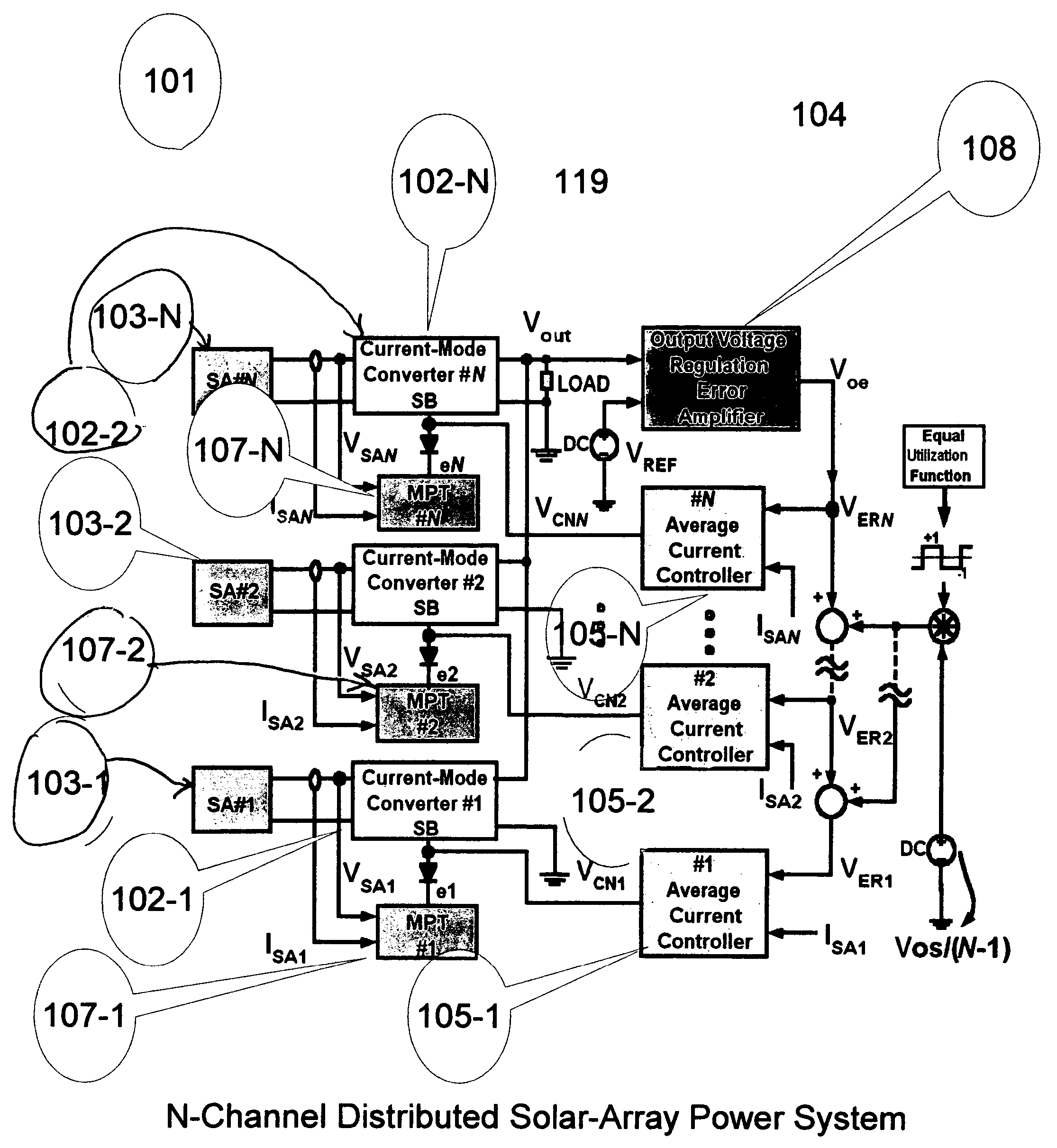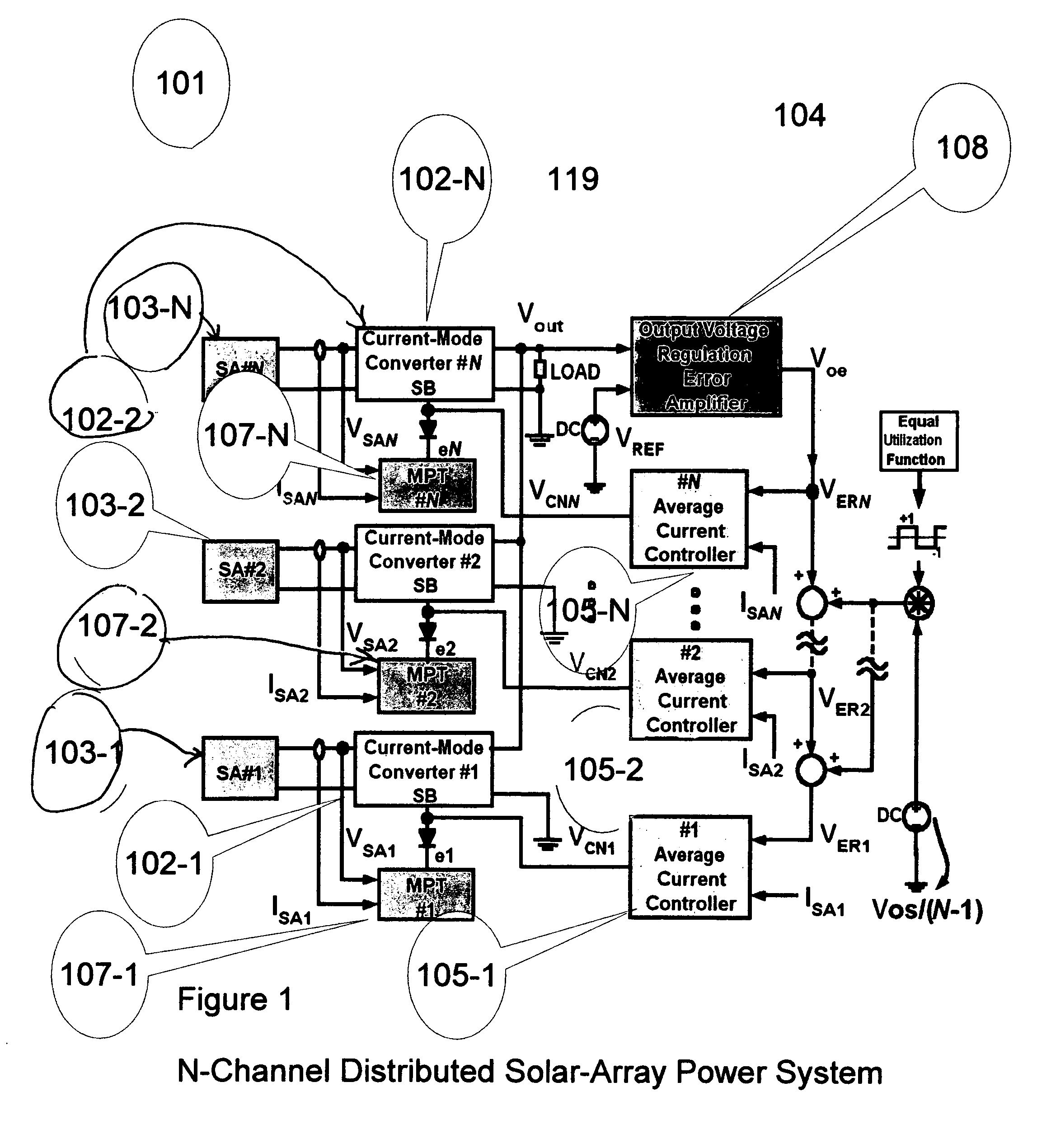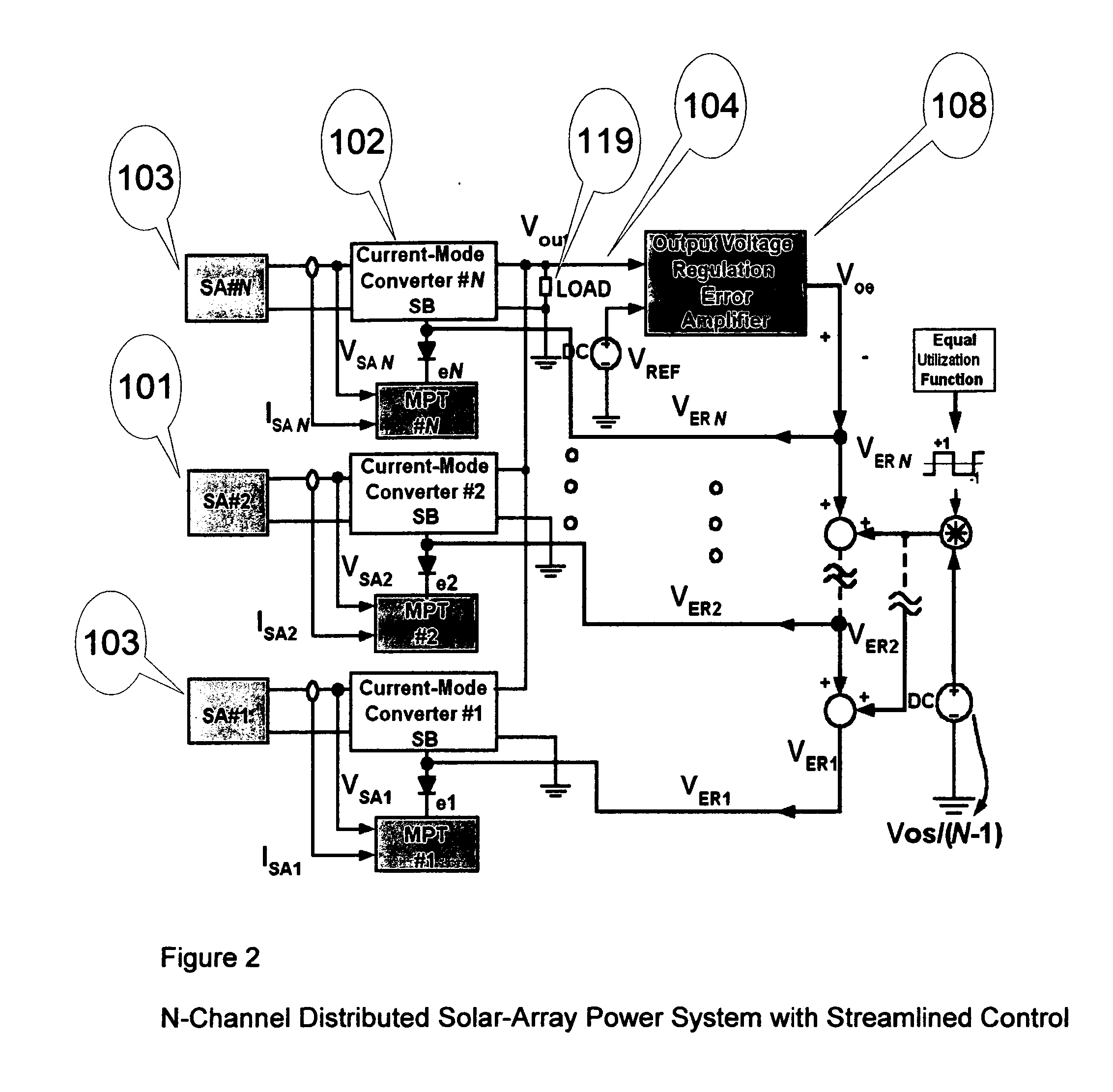Sequentially-controlled solar array power system with maximum power tracking
- Summary
- Abstract
- Description
- Claims
- Application Information
AI Technical Summary
Benefits of technology
Problems solved by technology
Method used
Image
Examples
Embodiment Construction
[0021] The invention is a highly efficient power and control architecture or circuit or system employing distributed direct current to direct current (dc-dc) converters. The dc-dc converters sequentially regulate power flows from independent solar-array sources or a mixture of power sources providing power to a common load. Stiff or tightly banded bus voltage regulation is obtained by tightly controlling the most recently activated dc-dc converter power-processing channel while keeping the previously activated power-processing channels in the maximum power tracking (hereinafter “MPT”) mode to supply their maximum power to the common load. The remaining inactive dc-dc converter power-processing channels are turned off or operated in stand-by mode. Since nearly all activated power-processing channels are operated in MPT mode, maximum solar-array utilization results and the MPT-controlled solar array sources perform with significantly lower thermal stress levels, which in turn slow dow...
PUM
 Login to View More
Login to View More Abstract
Description
Claims
Application Information
 Login to View More
Login to View More - R&D
- Intellectual Property
- Life Sciences
- Materials
- Tech Scout
- Unparalleled Data Quality
- Higher Quality Content
- 60% Fewer Hallucinations
Browse by: Latest US Patents, China's latest patents, Technical Efficacy Thesaurus, Application Domain, Technology Topic, Popular Technical Reports.
© 2025 PatSnap. All rights reserved.Legal|Privacy policy|Modern Slavery Act Transparency Statement|Sitemap|About US| Contact US: help@patsnap.com



